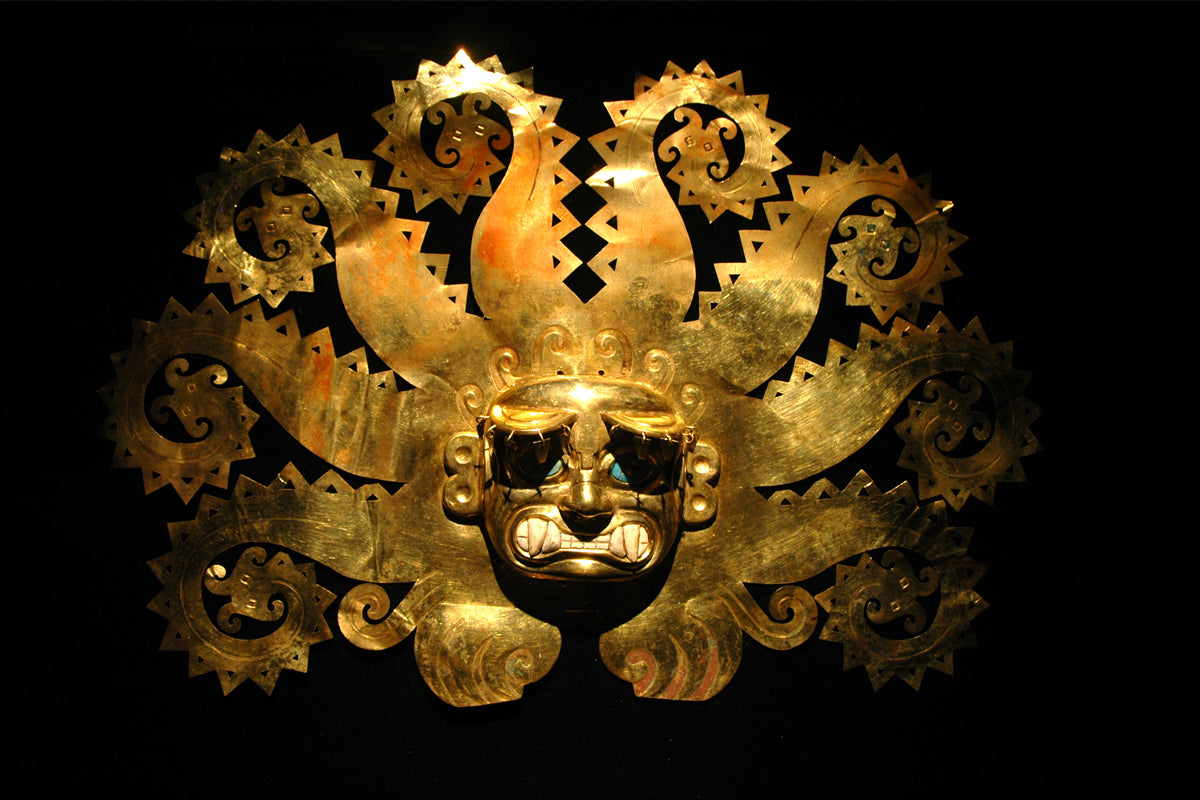Museum Pieces: The Effort to Recover Cultural Heritage
Over the centuries, countless pieces of cultural value have been extracted from their countries of origin, ending up in museums and private collections around the world. This practice has sparked deep debates about cultural ownership and the right of countries to reclaim their heritage. This blog analyzes the global effort to recover these artifacts, highlighting emblematic cases such as the return of Machu Picchu pieces by Yale University. It will also address the illicit trafficking of pre-Columbian artifacts, the dispersion of Peruvian jewelry in international museums, and how affected nations are fighting to protect and recover their cultural heritage.
The Machu Picchu Pieces and Their Return from Yale
One of the most significant cases in heritage repatriation is the return of Machu Picchu archaeological pieces from Yale University. American explorer Hiram Bingham extracted these artifacts during his 1912 excavations and took them to the United States, starting a dispute that would last nearly a century. Despite initial resistance, in 2011, Yale finally agreed to return much of the collection to the Peruvian government. The process involved complex diplomatic and legal negotiations that culminated in 2012, when over 5,000 artifacts were repatriated. This act set an important precedent in the global fight for the return of cultural assets.
Archaeological Looting and the Fight Against Illegal Trafficking
Archaeological looting and the illicit trafficking of cultural pieces remain current issues. From colonial times to the present, thousands of artifacts have been taken from Peru and other countries with rich pre-Columbian traditions. These pieces, often obtained illegally, end up in private collections or are auctioned on the black market. Efforts to combat this trade include both local measures and international cooperation. In 2004, Argentine police intercepted one of the largest illegal collections, with over 50,000 archaeological pieces, 20,000 of which belonged to Peru. This case illustrates the magnitude of the challenge faced by authorities.
Casa Concha Museum: A Symbol of Recovered Heritage
The creation of the Casa Concha Museum in Cusco became a tangible response to the return of Machu Picchu pieces. This museum houses and exhibits 366 returned artifacts, providing visitors with a detailed view of the history and excavation process of the Inca citadel. The museum not only offers an exhibition of the pieces but also interactive and educational resources that narrate the long journey of these treasures back to Peru. This initiative symbolizes the effort to recover and preserve cultural heritage, allowing the public to access these vital fragments of Peruvian history.
Pre-Columbian Jewelry: Treasures Scattered in International Museums
The looting of pre-Columbian pieces is not limited to archaeological artifacts; ancient gold jewelry has also been a target of illicit trafficking. Many of these valuable pieces now reside in museums in Europe and the United States. For example, the Gaffron Collection in Munich houses gold cups and jewelry from Lambayeque, while the Schmidt Collection in New York boasts an impressive selection of Inca artifacts. Although these jewels are exhibited as testaments to vanished cultures, their absence from their place of origin raises questions about cultural ownership rights and the repatriation of these pieces.
The Problem of International Auctions
International auctions of pre-Columbian art have exacerbated the issue of illicit trafficking in cultural heritage. On many occasions, looted or illegally sold pieces appear in international auction houses. In 2007, Christie’s in New York was forced to suspend an auction of pre-Columbian art after discovering that several pieces might have been obtained through looting in Peru. Such events highlight the need for greater oversight and stricter international regulations to ensure that cultural assets are not illegally traded, as well as the importance of raising awareness about the provenance of these objects.
The Role of UNESCO and International Laws
UNESCO has played a fundamental role in the protection and repatriation of cultural assets. Through the 1970 Convention on the fight against illicit trafficking in cultural property, the organization has provided a legal framework for the restitution of objects to their countries of origin. Many states have ratified this convention, and thanks to it, numerous stolen pieces have been recovered. However, the enforcement of these regulations still faces challenges, especially when dealing with objects that have changed hands multiple times or are in private collections that are not always accessible to authorities.
International Cooperation: A Path to Recovery
The success of cultural asset repatriation largely depends on international cooperation. Countries like Peru have established agreements with museums and foreign governments to facilitate the return of artifacts. In some cases, these negotiations are resolved amicably; in others, legal intervention is required. A recent example is the agreement between Peru and the Ethnographic Museum of Berlin, which in 2021 returned a set of pre-Columbian pieces. Such cooperation is essential to ensure that cultural heritage returns to its country of origin and strengthens the global commitment to cultural preservation.
The recovery of lost cultural heritage is a challenge that involves diplomatic, legal, and social efforts. Emblematic cases like the return of Machu Picchu pieces mark an important milestone, but the road ahead is long. Archaeological looting and illicit trafficking remain ongoing problems, highlighting the need for stronger international cooperation and the implementation of stricter laws. As more pieces are recovered, affected countries can restore a vital part of their cultural identity, educating the world about their history and protecting their legacy for future generations.
Sources Consulted:
- (1970). Convention on the Fight Against Illicit Trafficking in Cultural Property.
- Carballo, D. (2018). The Recovery of Cultural Heritage in Latin America. University Publishing.
- Peruvian Ministry of Culture. (2011). The Return of Machu Picchu Treasures.
- Rodríguez, M. (2004). Illicit Trafficking of Cultural Property in Latin America: The Peruvian Case.
Article originally published on [7/7/2020], updated on [11/10/2024]


